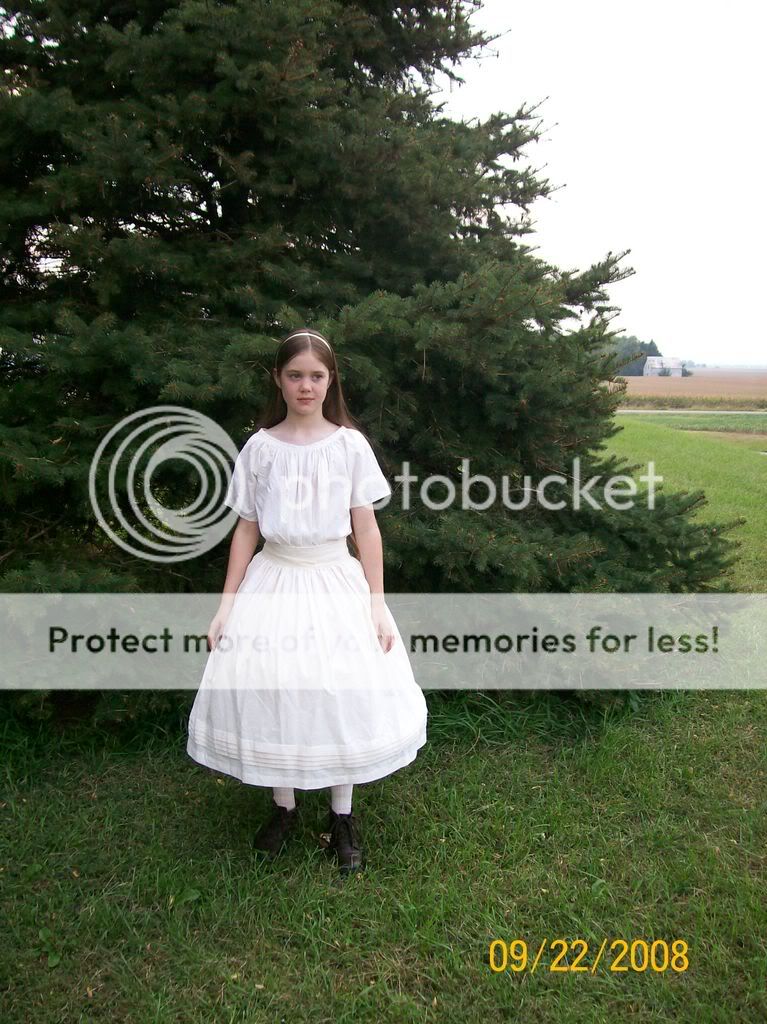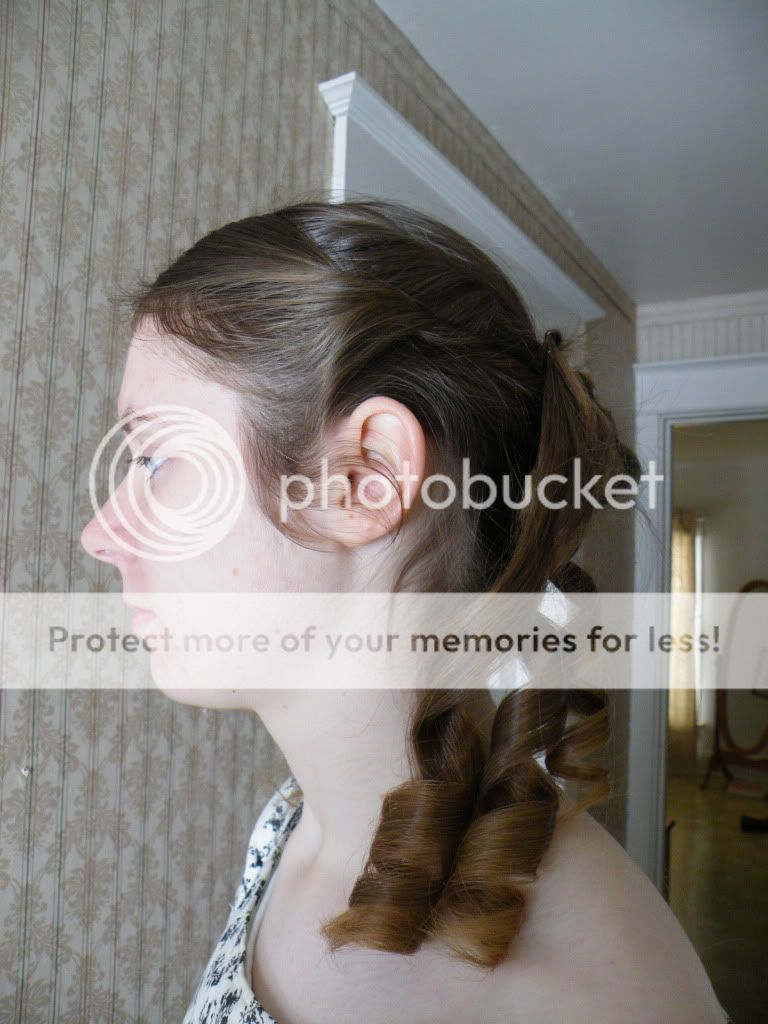We used Elizabeth's chemise pattern. The fabric is utility muslin. This was the first pattern I drew. I guess that's why the sleeves are considerable to long. For her drawers I once again used one of Elizabeth's patterns. But since its for split drawers and Megan's needed to be closed I had to do quite a bit few adaptions to switch them to side opening. Briefly and without pictures, you draft the drawers to measure, then pick a point just "forward" of 1/2 way across each waist edge, and cut a slit down about 5-6"; hem the slit and reinforce the bottom. Sew the drawers legs, hem, tuck, etc; sew the crutch seam completely.
Then cut two waistbands. The back band needs to be long enough to wrap to the front a tad. The front band holds the button, the back the buttonhole. Gather the front and back to match the bands, and finish the bands as in the pattern.
Next comes the cage and petticoats. I don't have a picture of her cage. Which is probably a good thing because it looks pretty rough. :P But it worked for several years so I guess that's all that matters. :D One doesn't need a pattern for something so simple as a petticoat, but this article may help. :) I did 5, 1" (finished) tucks on hers. They really helped add some body and held her skirt out well.
The dress. We got HMP-250 for it. It was one of the best purchases I've ever made. We've used it so much ever since then. Its a perfect base for our dresses. I'd recommend it to anyone! :) We did a Natural Waist bodice, with puff sleeves, and a gathered skirt. I also did 5 tucks on this. The fabric is plaid homespun. It actually held up considerably well. She just out grew it last year and it has alot of wear left in it. :)
We also made it for an interchangeable long sleeve bodice for colder events. Natural waist bodice and coat sleeves.
And lastly a pinafore. We used a homespun for it to. Never failing I make the bodices to long everytime I use this pattern. But its an easy enough thing to fix, I suppose. :)
Overall not my best pieces, but I suppose I can't expect much more from a 12 year old. :P
Love,
Brooke













